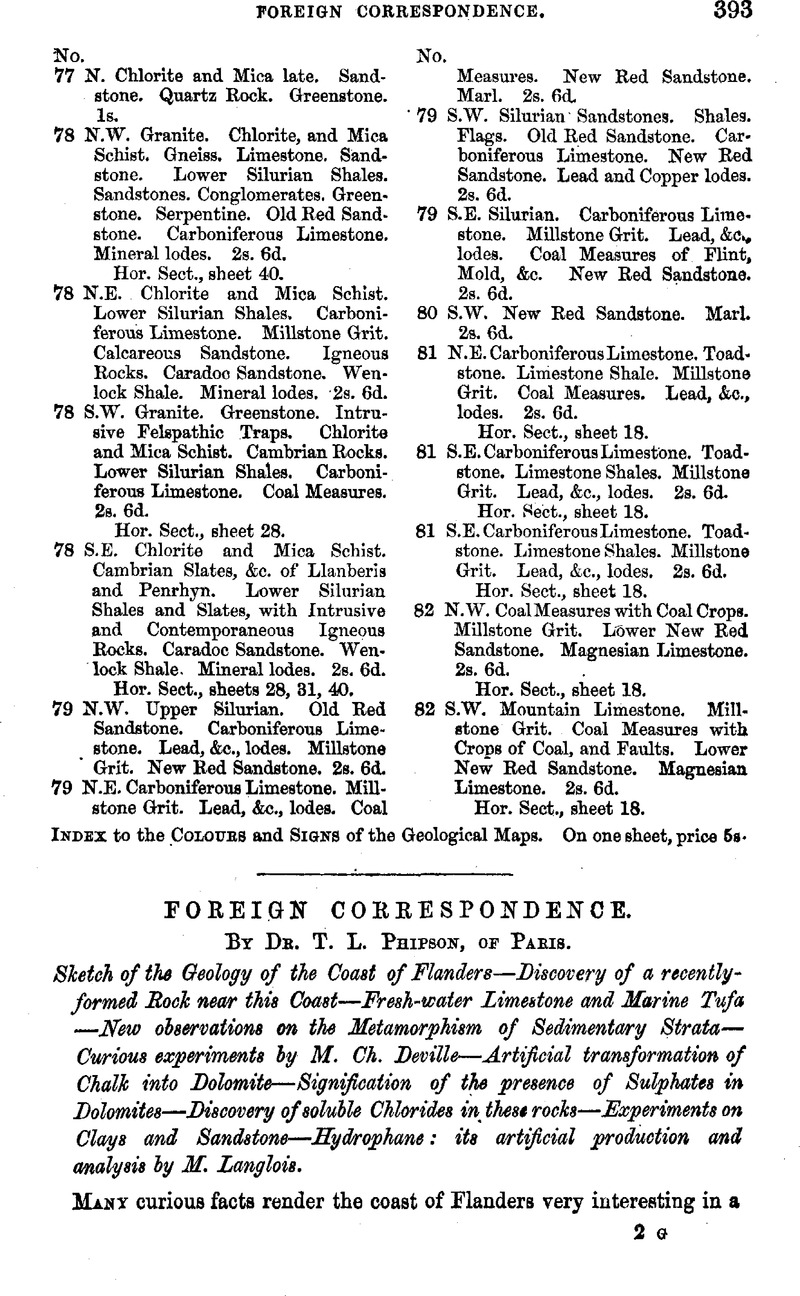No CrossRef data available.
Article contents
Foreign Correspondence
Published online by Cambridge University Press: 17 March 2016
Abstract

- Type
- Letter
- Information
- Copyright
- Copyright © Cambridge University Press 1858
References
page 394 note * We have already noticed this in the pages of the Geologist (January, 1858).—T. L. P.
page 394 note † About six miles out at sea, and stretching along the coast from Blankenberg to Ostend (a distance of about ten English miles), exists a bank or bar, called by fishermen “The Black Bank,” which is the most dangerous on the coast. There are also many sand-banks, which shift their places according to the weather, the currents, &c. The bank we allude to here is, however, nothing less than the peat and clay beds mentioned in the text as stretching out into the sea underneath the sand of the coast. It consist principally of peat, of which large fragments, often pierced by innumerable Pholas dactylus, &c, are constantly thrown upon the coast in rough weather. The anchors of ships will not hold in it; and at low water it is covered with only three feet of water.—T. L. P.
page 395 note * Since I found this marine tufa on the coast of Ostend, I have seen, in the geological collection of the Jardine des Plants, at Paris, a rock called “Grès coquillier de Beauchamp (Seine et Oise),” containing both marine and fresh-water shells, and which appears to me to be identical with the tufa described in the text above.—T. L. P.
page 395 note † Hist. Physique des Antilles; also Humboldt Relation Historique.—T. L. P.
page 396 note * Voyage dans les Alpes.—T. L. P.
page 396 note † And likewise Perron (see Beudant, Geologie).—T. L. P.
page 396 note ‡ See the Geologist for February, 1858, p. 72 et say.—T. L. P.
page 396 note ∥ Topaz contains mica, &c.—T. L. P.
page 397 note * Haidinger, de Morlot, Marignac, Durocher, &c.—T. L. P.
page 398 note * We should remember that a well-known English savant, Dr. Percy, formerly suggested that the circumstance of the production of Gehlenite, at a high temperature, in an iron furnace, may possibly be available by geologists in explaining the formation of the rocks in which the natural mineral occurs, as in the Valley of Fassa (or Fassathal) in the Tyrol, mentioned here.—T. L. P.
page 398 note † Silicate of Alumina.—T. L. P.
page 399 note * We remember having read in the Comptes Rendus, of the Paris Academy of Sciences, a memoir published many years ago by Ebelman, late chemist of the porcelain manufactory of Sèvres, where he describes a process by which he produced hyalite; and, if we are not mistaken, hydrophane also. We will turn again to this memoir at the first opportunity.—T. L. P.


